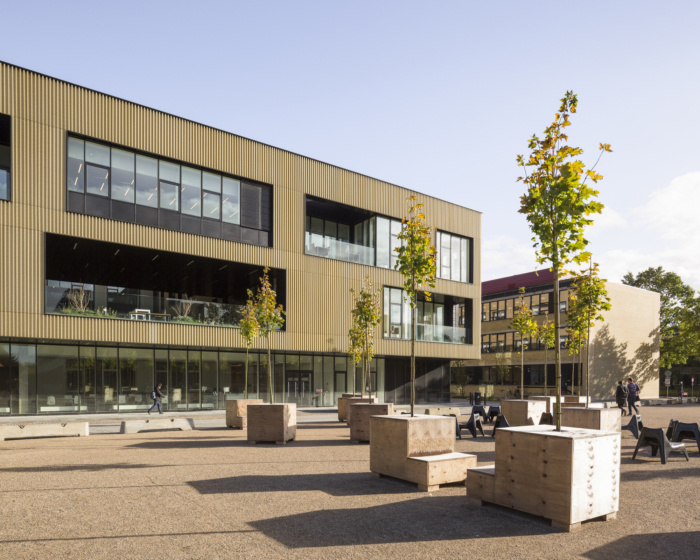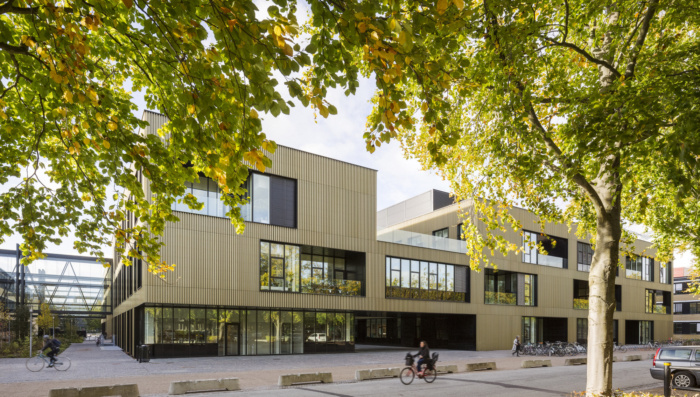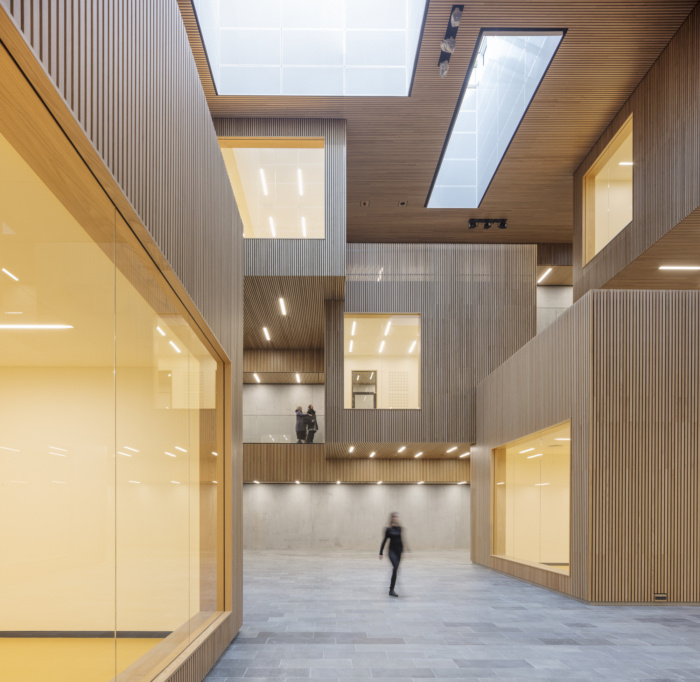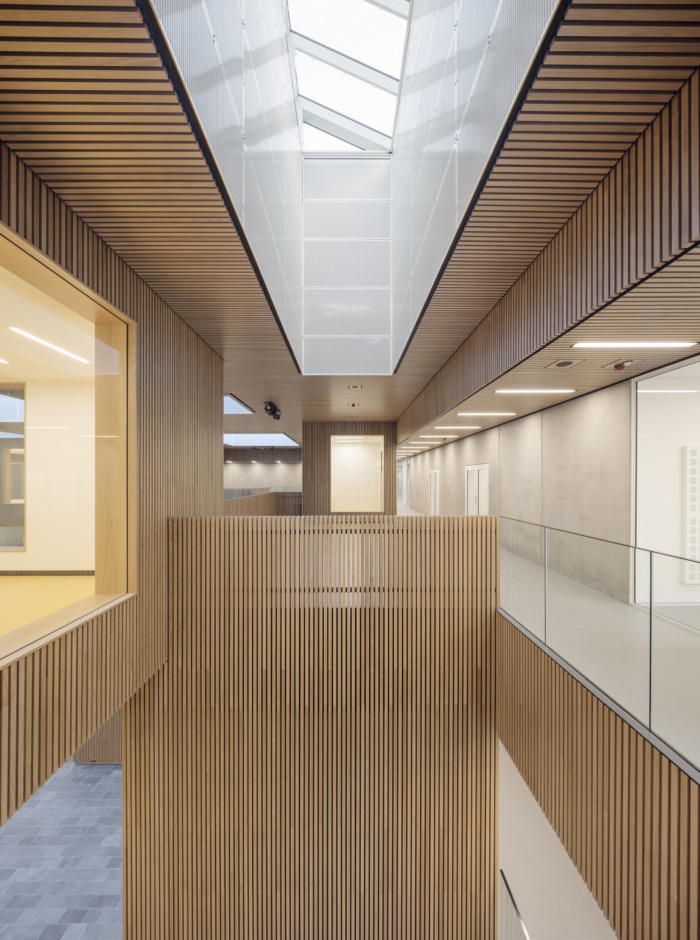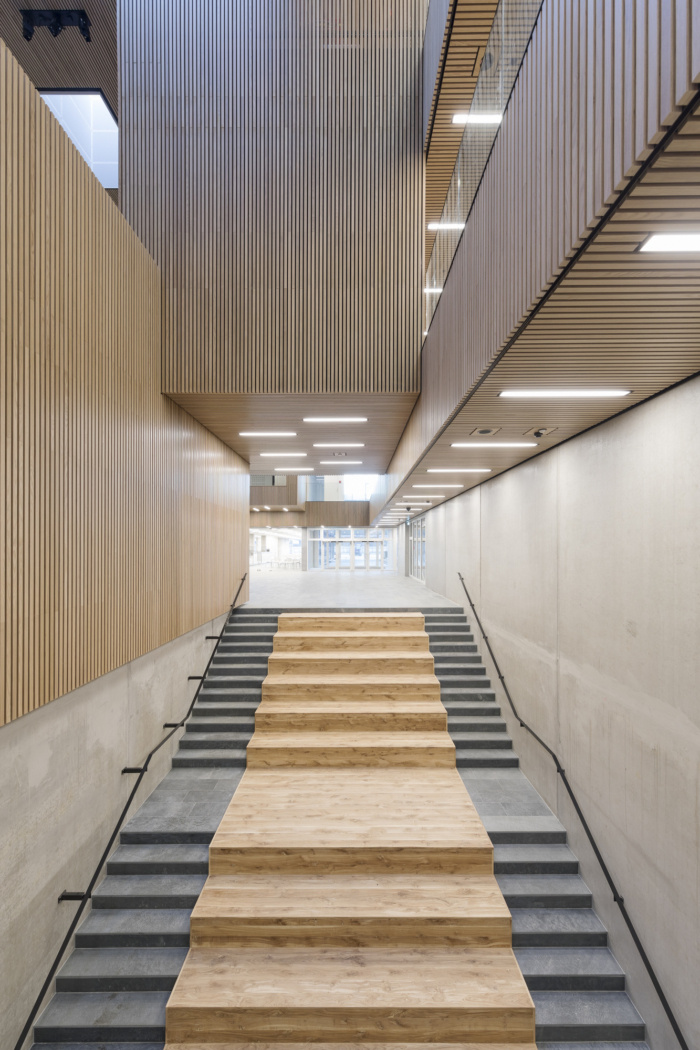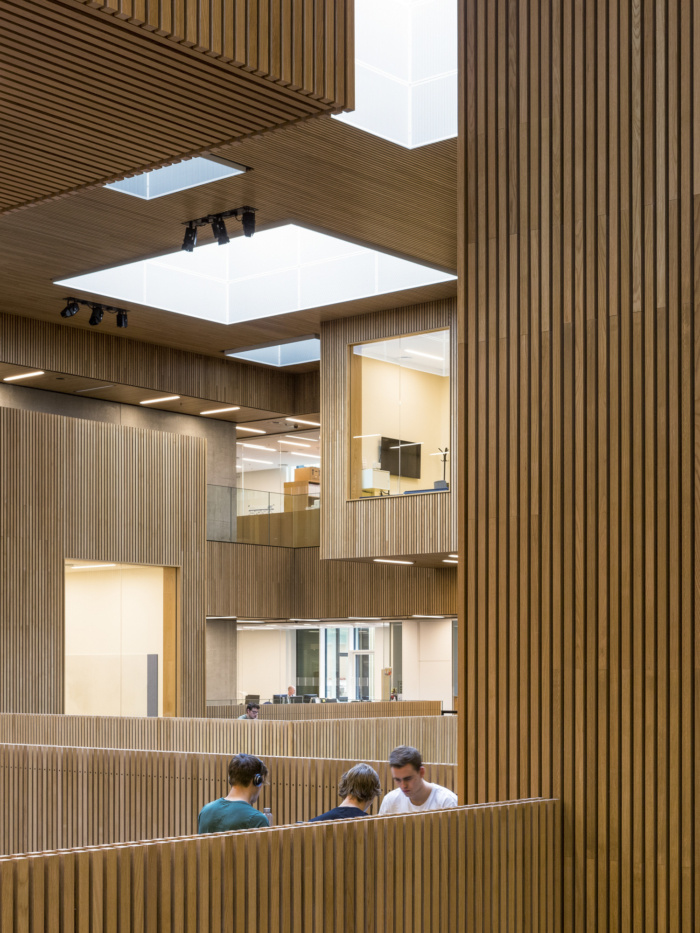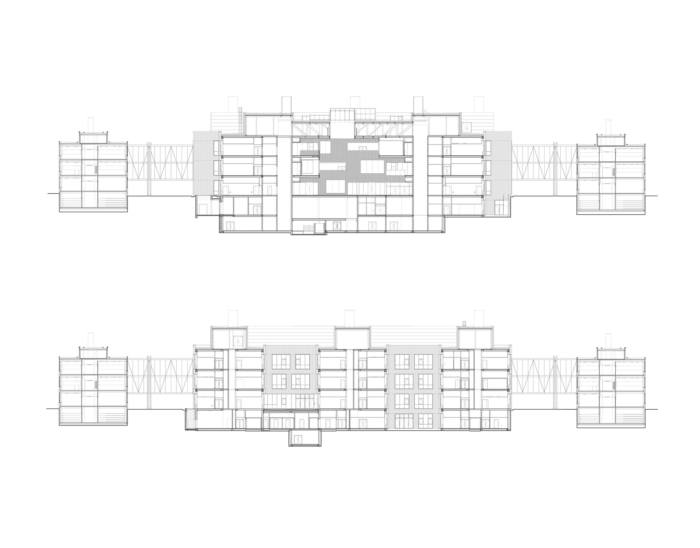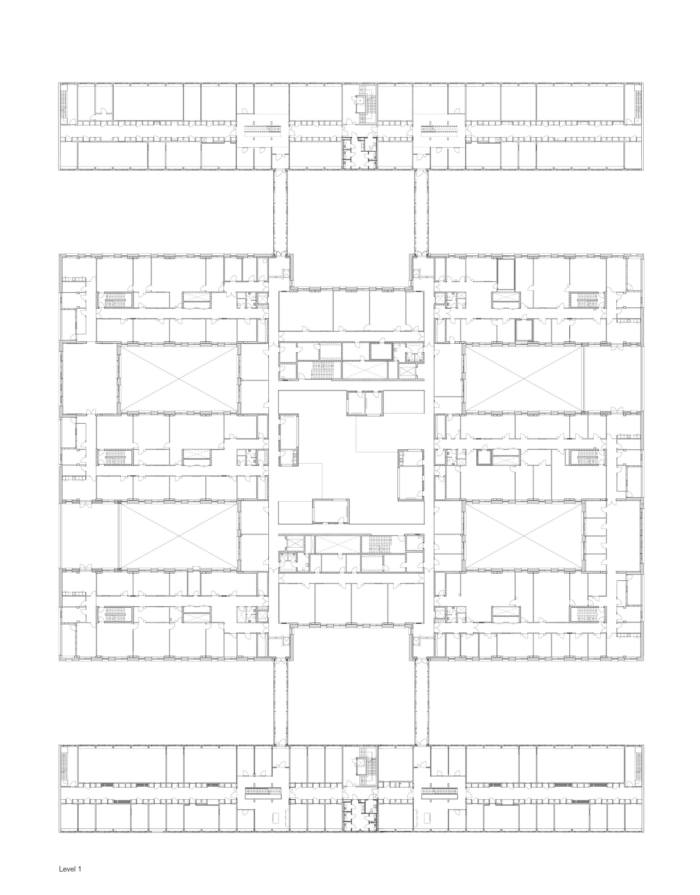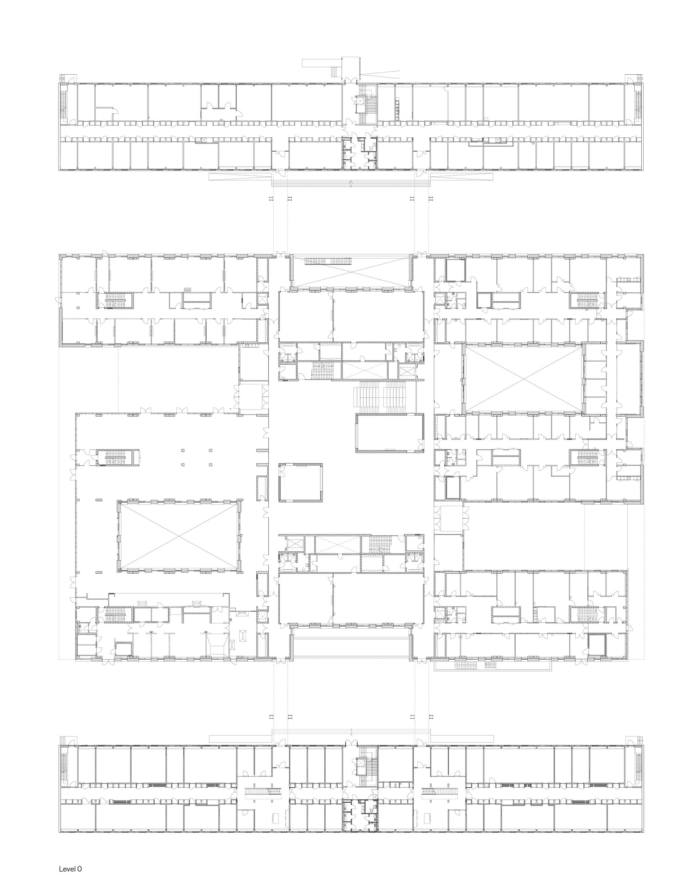DTU Life Science & Bioengineering B202
Christensen & Co Architects worked with Rørbæk & Møller Architects to bring DTU Life Science & Bioengineering B202 style a sleek and thoughtful design in Lyngby, Denmark.
The new building for Life Science and Bioengineering is the largest project since the Technical University of Denmark (DTU) was inaugurated in the 1960s. In a respectful yet innovative transformation of the original architecture, the façade of gold-anodised and black-lacquered aluminium is broken into sections with niches and balconies that create a vibrant sense of scale.
The building rises from the ground opening up into a warm wooden interior where the atmospheric atrium, the Biosphere, unites the previously separated bio-scientific research communities of the university.
In the Biosphere daylight flow from large skylights above oak-clad meeting boxes that almost float in mid-air. Thousands of oak lamellae are meticulously placed to create a sensuous room filled with visual experiences, where the meeting boxes opens up a wealth of spatialities. In addition, the warmth of the oak wood translates the façade’s golden hue into an inner texture, closely linked to the field of research conducted by the bio-scientific research environment. The three-storey atrium are specifically designed to create spaces for meetings and academic exchanges between researchers, students, partners, and guests. Facilities for presentations, debates, exhibitions and events, and open lounge areas ensures that the Biosphere caters to a broad pallet of social interactions, all of which will strengthen the academic research environment of the university.
The open, bright atrium creates visual contact between researchers and staff, thus the architecture supports the vision of openness and knowledge sharing between the various academic fields. However, the many niches and smaller spaces in the large open spaces create plenty of opportunities for focused work in smaller groups or individual studies. The building site of Life Science and Bioengineering used to be a small grove of oak trees. The oak trees were cut down and reused as a seating platforms in a large staircase. The stair case leads to the lower levels of the building and can be used for lectures and as a gathering point for visiting guests.
Architect: Christensen & Co Architects, Rørbæk & Møller Architects
Photography: Adam Mørk, Hampus Berendtson


